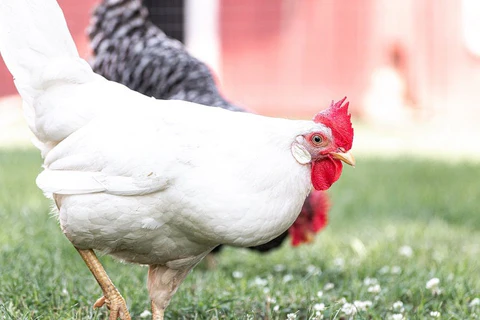The Leghorn Chicken Deep Dive
The Leghorn originate from a region in Northern Italy near the port for its namesake, Leghorn. The ancestors of this fowl are not known. The Leghorn arrive in America in the mid-1800’s by Captain Gates. The APA recognizes many varieties of the Leghorn, but they all came at different times.
Characteristics
A small, spritely, noisy bird with great style, Leghorns like to move about. They are good foragers and can often glean much of their diet from ranging over fields and barnyards. Leghorns are capable of considerable flight and often roost in trees if given the opportunity. Leghorns and their descendants are the most numerous breed we have in America today. The The Leghorn has red wattle, white earlobes, and either a single or rose comb. Leghorns rarely go broody.
Standard Weights
Cock: 6 lbs
Hen: 4.5 lbs
Cockerel 5 lbs
Pullet: 4 lbs
Varieties
- Single Comb Dark Brown
- Single Comb Light Brown
- Rose Comb Dark Brown
- Rose Comb Light Brown
- Single Comb White
- Rose Comb White
- Single Comb Buff
- Rose Comb Buff
- Single Comb Black
- Single Comb Silver
- Single Comb Red
- Single Comb Black Tailed Red
- Single Comb Columbia
Leghorn Appearance
Leghorns are commonly recognized in their white variety by their characteristic pure white feathers and bright red comb. All leghorns have bright red, single combs that are medium to large in size. A leghorn’s comb should have 5 distinct points. In cocks, all 5 points should stand upright. In hens, the first point should be upright, and the remaining points should droop to one side, called a lopped comb. Leghorns also come in a rose comb variety. Rose comb leghorns should have a bright red rose comb that is medium in size. The rose comb should have a square front ending with a well-developed spike off the back.
A leghorn’s wattles should also be bright red and should be medium to large in size. Their earlobes should be oval and white in most leghorn varieties. A leghorn’s eyes are a deep reddish in color and the beak, shanks, and toes should be yellow in most varieties. Leghorns are a 4-toed, clean legged chicken breed.
Leghorns have been recognized in many different color varieties. Barred, black, buff, buff Columbian, Columbian, dark brown, exchequer, light brown, silver, and white are recognized varieties in both single comb leghorns and rose comb leghorns. Additionally, single comb leghorns are recognized in black-tailed red, blue, golden, mille fleur, and red varieties. Rose comb leghorns are recognized in the Dominique variety as well.
Leghorn Egg Production
One of the leghorns' best known traits is its reputation as a superb egg producer. Leghorns are known to produce well over 300 eggs per year, with many hens laying nearly an egg a day for the first 2 years of their life. Industrial strain leghorns can average about 6 eggs a week and heritage leghorns will lay around 4-5 eggs a week.
Since the white leghorn variety has been developed as an industrial variety, they are known to be the best egg producing variety of the leghorn breed. However, all varieties will lay large, white eggs regularly. Since the leghorn was developed for the main purpose of egg production, the hens will rarely go broody. They tend to start laying around 18-20 weeks of age and will take a break around 1.5-2 years of age for their first annual molt.
Leghorns are not only popular because of their reliability, but they are also known to have one of the best feed-to-egg conversion ratios. Meaning, they eat less feed than other chicken breeds in comparison to how many eggs they produce. This makes them an efficient and economical breed to raise for eggs. Even the bantam leghorns have a reputation as being the best layers of any bantam breed.
Conclusion
Leghorns are a great chicken breed choice if you want a small bird that is economical to raise and lays plenty of large, white eggs for you to enjoy! They often have quirky personalities and are quick, smart, and active. Leghorns are independent and do great in a homestead setting where they are left to their own devices. If leghorns sound like a good fit for your flock, give them a try and be ready for cartons of large, fresh eggs to enjoy!













0 Comments